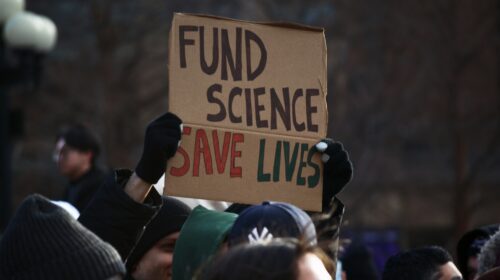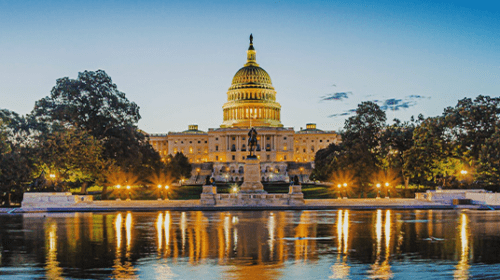Social media has become an immovable cultural force that our society loves to hate and hates to love. At its best, social media has the power to connect us more than ever and provide a supportive community to those who have gone without it for too long; at its worst, it has become an amplification tool for harassment, judgment, ignorance, marginalization, and misinformation (in other words, an instrument of destruction for the aforementioned good parts).
The recent recommendation from the Surgeon General to put a warning label on platforms is just the latest indicator that while social media is here to stay, we should proceed with caution when considering its impact on our mental health.
One area in which the duality of social media has become glaringly apparent is the addiction recovery and mental health landscape. With up to 95% of teenagers and 40% of children aged 8-12 reporting some level of social media presence, as well as an overwhelming majority of adults, it’s more important than ever to take a realistic look at the risks and benefits of these platforms and how they can positively and negatively impact mental health.
Bad News First: Mental Health Risks of Social Media
There’s a reason why the Surgeon General has been calling for regulation, limitation, and responsible use of social media platforms for years. Use of these platforms has been linked to a variety of negative mental health issues that, while particularly significant for younger users whose brains are still developing, can also impact adult brains. These issues can, and often do, translate to the development or escalation of substance use. Here are just a few of the more common social media mental health pitfalls.
FOMO-Fueled Depression and Anxiety
We’ve all been there. You see a friend, loved one, or even an influencer showing their perfectly curated life on Facebook or Instagram and think, “I want that.” or “I’m missing out.” or “I’ve somehow failed because I couldn’t make that happen in my own life.” Even though we may know these moments are staged and that nobody’s life is perfect, it doesn’t stop us from comparing it to our own lives. FOMO that originates with social media and problematic smartphone use has long been linked to depression and anxiety, which can have lasting mental health ramifications, including substance use.
Scrolling and Trolling
When examining the world through the lens of social media news feeds, it’s easy to think that it is an irredeemable hellscape plagued by a constant glut of tragic events. Prolonged exposure to this kind of material has an undeniable effect on our everyday mood and how we view the world.
Doom scrolling has been linked to adverse mental AND physical health issues. The reality is these platforms have a vested interest in keeping you scrolling, and one of the most effective ways to do this is by offering up shocking and tragic content that you’re compelled to engage with and comment on.
At the same time that we’re subjecting ourselves to mental health triggers, bullies and trolls are all too happy to give us a hand. While it’s particularly prevalent among teens and adolescents, bullying on social media impacts people of all age groups in a variety of different paradigms. This type of harassment can dramatically increase the likelihood of substance use disorder, particularly in teens.
Alco-Rhythms
Whether it’s cocktail culture, problematic drinking disguised as comedy, or anything else your algorithm thinks you want to see, alcohol can easily find its way into post after post on your feed. Not only can this reframe the perception of alcohol use in a dangerous way by creating a heightened preoccupation, but it can also be a trigger to people in the early stages of recovery.
Can Social Be Addictive by Itself?
The short answer is yes. Positive engagement with user profiles (likes, shares, comments, etc.) creates constant surges of dopamine to the point of what many experts characterize as addiction. Multiple studies have highlighted the addictive potential of social media and how it activates the same pleasure centers of the brain as prolonged and untreated use of drugs and alcohol. We also see this behavior in our friends, family, and even ourselves.
Now for Some Good News: How Social Media Helps Recovery
For all its ills and potential for abuse, social media has also helped guide people to access the support and resources that are crucial for substance use recovery and balanced mental health in both direct and indirect ways.
The Best Disinfectant
For starters, social media users have simply done more to highlight the importance of prioritizing mental health. Many users on these platforms are younger and emblematic of a general shift toward discussing and acknowledging the importance of mental health. This has been critical to erasing stigma, creating supportive spaces, and signaling to people that it’s OK to ask for help.
Stronger Connection and Support
Social media platforms have significantly strengthened the ability of the recovery community to support and help one another. Continued emotional and logistical support is a cornerstone of addiction recovery. Social media has created the opportunity for alum communities of treatment centers to maintain contact and exchange support, coordinate and announce in-person events, provide information for local and regional meetings, and be a general lifeline to people during the more vulnerable points of their recovery.
A Place to Go
One of the strongest arguments against putting age restrictions on social media is that it would take away a safe space for teens and adolescents who feel marginalized and alone in their everyday lives. Providing this sense of community can help offset the risk of self-harm and substance abuse.
Somewhere in Between
The bottom line is that there are “goods” and “bads” of social media when it comes to addiction and recovery, and there are a few ways to best ensure you’re leveraging these platforms toward positive and balanced mental health:
- Limit time spent on platforms (set an alarm to remind you to stop if necessary).
- Adjust your algorithm settings to ensure helpful and supportive content
- Make a conscious effort to spend time outside and build relationships outside of social media
- Block, disconnect, or disengage from people whose content you find problematic
- Look for positive pages to follow, and don’t be afraid to engage with organizations that can help you
Perhaps the most important thing to remember is to approach platform interaction with realism. Remember that nobody’s life is ever as perfect as they make it on their profiles, and other people’s experiences aren’t a reflection of how you’re moving forward in life. You’re doing great!

























